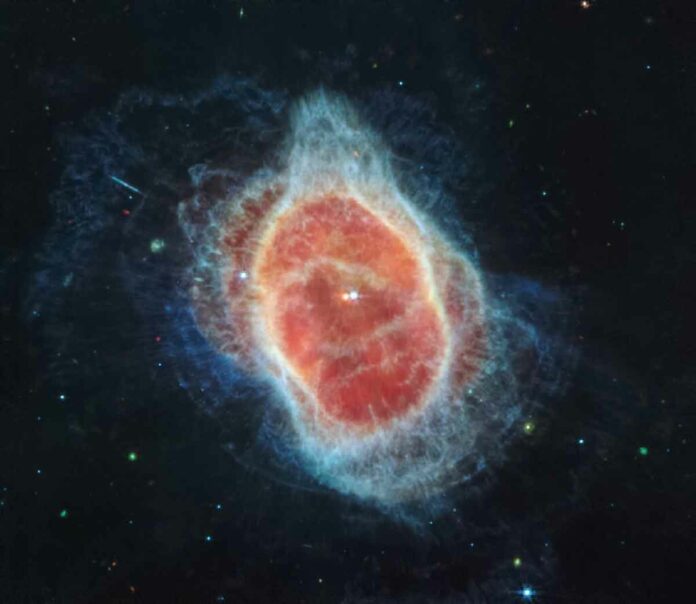The stunning shroud of gas and dust illuminated by a dying star at its heart was one of the first famous images revealed by the James Webb Space Telescope.
Researchers analysing data from the world’s most powerful telescope have discovered evidence of at least two previously unknown stars lurking in the stellar graveyard.
The Southern Ring Nebula is located about 2,000 light years from Earth in the Milky Way. It was previously thought to contain two stars. One is a white dwarf star nestled in the nebula’s centre. It was ejecting torrents of gas and dust for thousands of years. It was forming the surrounding cloud.
The extremely hot white dwarf has lost its brightness. It is the less visible of the two stars seen in Webb images released in July. The white dwarf has provided astronomers a glimpse of how our own Sun might die billions of years from now.
The white dwarf has a companion. It is the brighter of the two stars in Webb’s images.
According to Philippe Amram, an astrophysicist at France’s Marseille Astrophysics Laboratory, this binary system is common throughout the Milky Way. But it does not explain the nebula’s “atypical” structure.
Amram is a co-author of a study published in the journal Nature Astronomy. Scientists used Webb’s observations to uncover more of the nebula’s secrets.
The nebula was discovered in 1835 by English astronomer John Herschel. Since then, astronomers have puzzled over why it has “such a bizarre shape.”
The researchers discovered evidence of at least two other stars inside the nebula. It has a diameter equivalent to 1,500 times the distance between the Sun and Pluto. Scientists analysed data from Webb’s infrared cameras.
The new pair is slightly farther away from the white dwarf and its companion. All four stars are in the nebula’s centre.
They are close enough to interact. Their “energy exchanges” create the nebula’s unusual shape.
The Webb telescope has been operational since July. It has already produced a flood of previously unheard-of data. Scientists are also hopeful that it will usher in a new era of discovery.
More information: Orsola De Marco, The messy death of a multiple star system and the resulting planetary nebula as observed by JWST, Nature Astronomy (2022). DOI: 10.1038/s41550-022-01845-2. www.nature.com/articles/s41550-022-01845-2

